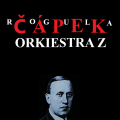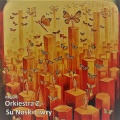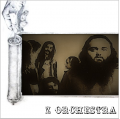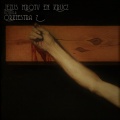Orkiestra Z
| This article is a proposal
|
Orkiestra Z was one of the most notable Venedic Zone Rock bands, existing in three successive incarnations under three slightly different names but always keeping its two core members: Frączyszek Jakówu and Wiktórz Nowicz.
History
Orkiestra Z (1970-75)
Orkiestra Z was founded in 1970 by several students at the University of Warsina (Uniwersitać Warsiniany), taking inspiration from the growing zonee scene across Europe and North America. The early line-up fluctuated with several members coming and going before any recorded output was released.
By 1973, the line-up was finally stabilized (see below), having only Frączysek Jakówu and Wiktórz Nowicz since its beginnings. Following the success of Ił Wiekły Drakuń, Dzieszekie Wenedkie "Muza" record label (the largest in the RTC) supported other national zone rock bands. So, in 1974, the first album by Orkiestra Z was released, simply called Przymy (First). Despite warm critical reviews, it sold badly. At that time, the band’s style wasn’t truly established yet, taking several different foreign influences. Following the album sales flop, Orkiestra Z disbanded during early 1975 while it was rehearsing new themes for the next album, which was never recorded.
Personnel
Note: only members from 1973 onwards are listed.
Frączyszek Jakówu: lead vocals, piano, and harpsichord.
Wiktórz Nowicz: harmonium and backing (sometimes also lead) vocals.
Feliks Broń: bass, backing vocals.
Marek Mazowik: accoustic and electric guitars.
Murzycy Gradziny: drums and percussion.
Głurzan Kąp: flute, backing vocals.
Rogula Orkiestra Z (1977-83)
In 1977, Orkiestra Z returned to life in a new incarnation. It was now called Rogula Orkiestra Z (Proud Z Orchestra), although the Orkiestra Z name was emphasized. Frączyszek Jakówu and Wiktórz Novicz were now much better musicians, and several other young talents joined.
By this time, the record label Dzieszekie Wenedkie "Muza" dominated the zone rock catalogue in the Republic of the Two Crowns. Ił Wiekły Drakuń was now a well-established act across continental Europe. Melodia supported the return of Orkiestra Z, and they were able to release a new album, Roza za Łódź (Rose of Łódź). It was a concept album about the atomic bombing of Łódź and its aftermath, the rose being an allegory for the atomic mushroom. It was a remarkably mature work of inventive zong-opera with influences from both classical music and jass, featuring excellent musicianship, a perfect balance of acoustic and electronic sounds, and, most of all, Jakówu’s operatic and emotionally charged voice delivery. His voice and the interplay between his piano and Nowicz’s trautonium and harmonium became the hallmark of the band’s sound ever since. Critics generally gave particularly complimentary reviews, showing that the band had made an impressive quality leap. Wiktórz’s brother, Żowan, played flute as a guest musician and became a full member for the next album and onwards.
In 1978, Rzebica (Marihuana) was released, followed later the same year by the Čápek concept album (based on several Karel Capek works) and by Su Noski Liwry (I Was Born Free, released in 1979), forming a trio of equally highly regarded and essential zong-opera albums in the heyday of Zone rock. During this period, Rogula Orkiestra Z took the lead of zone rock in the RTC, as Ił Wiekły Drakuń made an unsuccessful move into symphonic zone sub-genre with their Jem Orkiestrona album (1978). They also opened concerts in the RTC for foreign zone rock stars (notably Exodus and Henderson, Enfield, Lockwood and Pitman) during 1978 and 1979 respectively.
Aiming to promote the band abroad, Melodia convinced them to re-record some of their songs in English. Lyrics were provided by Gary Lockwood (from HELP) and several songs from the Rzebica and Su Noski Liwry albums were re-arranged for their sixth studio album called Z Orchestra, released in 1980. To promote this, they successfully toured across Europe and North America, where a memorable concert in Alphabet City (New Amsterdam) was performed. The band also performed at Canterbury Rock Festival (August 1980), and together with Ił Wiekły Drakuń, they were the only Venedic bands present.
It was followed by an instrumental concept album in 1981, with some influences from jass. 1956 o. (The Year 1956) was loosely based in Dmitri Shostakovich’s Symphony No. 11 (The Year 1905), which was prohibited in Snorist Russia because it reflected the crackdown of the Hungarian Rebellion of 1956. It received mixed reviews, and fans missed Jakówu’s voice. But later that year, Rogula Orkiestra Z released their fourth (and last) concept album, Jezus Mroty en Krucz, which was also released internationally as Dead Jesus in the Cross. Themed about the cruxifixion of Jesus it was the last album to receive unanimous critical positive reviews.
In 1982, the band returned to studio recordings, releasing another instrumental album, this time together with the Filharmonia Naconała. Ocu Symfonia (Eighth Symphony, referring to this album as their eighth, not counting Z Orchestra) sold badly and received disappointing critical reviews. After that, Melodia pressured the band to release a well selling album. The final album by Rogula Orkiestra Z, Kętie Przymawierze (Songs of Spring), was released in 1983. It was a rather radio-friendly album with shorter compositions that sold reasonably well. The time of complex music and full creativity was over, sacrificed by sales figures. After that, Rogula Orkiestra Z once again disbanded in protest against their record label.
Personnel
Frączyszek Jakówu: lead vocals and keyboards (piano, celesta, spinet and harpsichord), sometimes acoustic guitar.
Wiktórz Nowicz: keyboards (trautonium, clavioline, harmonium, Orchestron), backing (and sometimes also lead) vocals, accordion.
Marczół Talórz: electric and acoustic guitars, mandolin, trumpet, french horn and backing vocals. Joined in 1978.
Rzenat Janiółu: bass,acoustic guitar, bandura and backing vocals.
Piotr Ludwik Kanicz: drums, percussion and timpani. Sometimes also recorder.
Żowan Nowicz: clarinet, recorder, flute, violin, assorted percussion, gong and mandolin.
Nowa Orkiestra Z (1988-89)
Five years after the disbanding of Rogula Orkiestra Z, Jakówu and Nowicz once again returned with a new incarnation of Orkiestra Z, this time called Nowa Orkiestra Z (New Z Orchestra), this time with a more keyboard-driven sound by lacking a guitar player. This final incarnation again gathered a group of fine musicians and recorded in 1988 a concept album, Dziczie Mie Komód Jora (Tell Me How It Was), under Melodia label. It was the last zone rock album released in the RTC, serving as some kind of epilogue (or even epitaph) to the genre, intending to tell younger generations the hopes and dreams of zonees and how the world evolved and made them obsolete. Critics recognized the musicianship and rich instrumentation but also stated it didn’t bring anything new, not having the creativity of the late 1970’s works. Even so, it was considered the band’s best album since Jezus Mroty en Krucz, although it sounded like it was made almost ten years ago already, at least, at the moment of releasing. After touring the album nation wide, the band once again split for the last time.
Personnel
Frączyszek Jakówu: lead vocals and keyboards (acoustic and electric pianos, celesta, spinet and harpsichord).
Wiktórz Nowicz: keyboards (trautonium, clavioline, harmonium).
Jerzy Grzykła: drums and percussion.
Łyczan Bowiny: bass.
Gallery of records
Rzebica (1978). Its artwork imitated local Pieści cigarette packs (*Here’s* Piast cigarettes [1]).
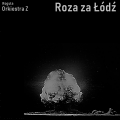
![Rzebica (1978). Its artwork imitated local Pieści cigarette packs (*Here’s* Piast cigarettes [1]).](/w/images/thumb/8/80/OrkiestraZ-Rzebica.png/119px-OrkiestraZ-Rzebica.png)
